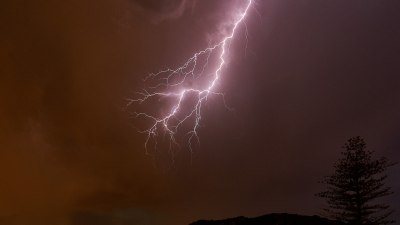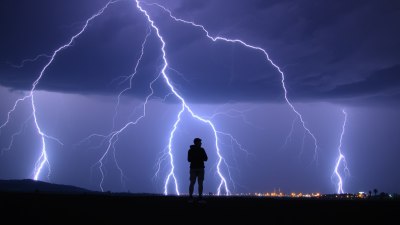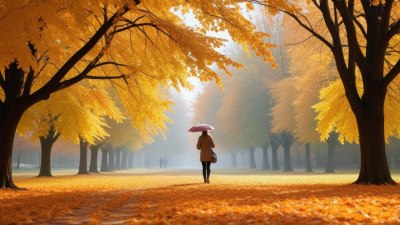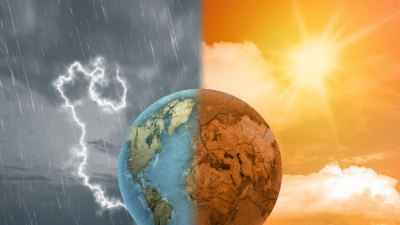Why Some Rainbows Appear More Vivid
Explore the science behind the vividness of rainbows and understand why some are more colorful than others.
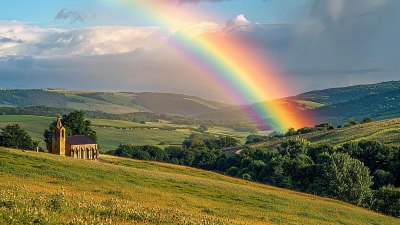
Image by Dinesharts on Freepik
Rainbows are one of nature's most beautiful phenomena, captivating our senses with their vibrant hues and ethereal arcs. While a basic understanding of rainbows involves light refraction and reflection, the reasons some rainbows appear more vivid than others are multifaceted, involving atmospheric conditions, light sources, and even the observer's perspective.
The Science of Rainbows
At its core, a rainbow is formed when sunlight interacts with water droplets in the atmosphere. This interaction begins with refraction, the bending of light as it passes from air into water, followed by reflection within the droplet, and then refraction again as the light exits the droplet. Each color in the light spectrum bends at a different angle, causing the various colors to spread out and create a circular arc of colors visible to the human eye.
Atmospheric Conditions
One of the primary reasons some rainbows seem more vivid is the presence of specific atmospheric conditions. For instance, the size of the rain droplets plays a crucial role in the intensity of colors. Larger droplets can create brighter and more vivid rainbows, as they allow for more significant refraction and reflection of light. Conversely, smaller droplets may produce fainter or less vivid arcs due to the scattering of light.
Moreover, as the sky clears after a rainstorm, the conditions are often perfect for rainbow formation. The presence of moisture in the air, combined with sunlight emerging from behind clouds, creates an ideal scenario for bright and lush rainbows. Additionally, the position of the sun relative to the observer also influences the appearance of the rainbow, with lower sun angles typically resulting in brighter and more vivid colors.
Light Sources
The source of light that creates the rainbow is equally significant. Sunlight that has been scattered by particles in the atmosphere, such as pollutants or dust, can affect how light refracts through the water droplets. In cases of heightened air pollution or exceptional clarity, the color saturation could vary significantly. Cleaner air conditions tend to yield clearer and more vivid rainbows, while pollution can dull their brightness and vibrancy.
Observer’s Perspective
The observer's location and perspective can dramatically alter the perception of a rainbow's vividness. The angle from which the sunlight hits the water droplets and the angle at which the observer views the rainbow can lead to variations in brightness and color saturation. Therefore, two observers standing just a few feet apart might see significantly different versions of the same rainbow, each expressing varying levels of intensity and color vibrancy.
Color Perception
Humans perceive color through complex mechanisms within our eyes and brains. Factors such as the surrounding light conditions where the rainbow is observed, the individual's eyesight, and even the emotional state can affect how vivid the colors of a rainbow appear. For example, emotional states ranging from joy to nostalgia might enhance an individual’s experience and perception of color saturation in a rainbow.
Environmental Factors
The broader environmental context in which the rainbow is viewed also plays a part. For instance, a rainbow that's seen against a backdrop of dark storm clouds can appear more vivid than one viewed against a lighter, more uniform sky. The contrast between the colors of the rainbow and its surroundings creates an optical illusion that enhances the perception of brightness and color quality.
Time of Day
The time of day can influence the appearance of a rainbow as well. Rainbows that form in the late afternoon or evening may display different hues and levels of vibrancy compared to those formed in the early morning. This occurs because the angle of the sunlight is lower during these times, which can lead to more intense color displays. Furthermore, certain atmospheric phenomena that occur during different times of the day may also enhance the vividness of the rainbow.
Seasonal Variations
Rainbows are most often associated with spring and summer, periods known for frequent rain showers and sunny spells. However, the seasonal conditions can affect their intensity and presence. During spring, rainfall is generally more abundant and coupled with sunshine, which creates optimal conditions for rainbows to form. In contrast, winter conditions may not favor the formation of vivid rainbows due to the presence of snow, ice, and different types of precipitation.
In essence, the reasons behind the vividness of some rainbows lie in a combination of scientific principles and environmental factors. From the size of rainfall droplets to atmospheric clarity, the position of the sun, and the observer's perspective, everything comes together to enhance or suppress the vibrancy of rainbows observed in the sky. Each rainbow tells its unique story, influenced by the fleeting moments of nature and the viewers who witness them. So the next time you see a rainbow, take a moment to appreciate its beauty and the manifold factors that make it a radiant spectacle in the sky.
